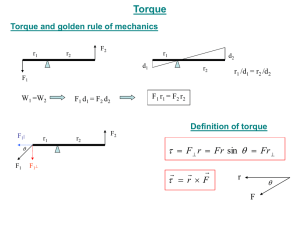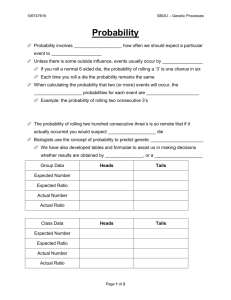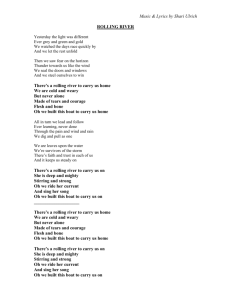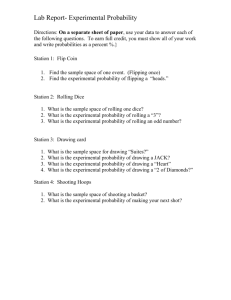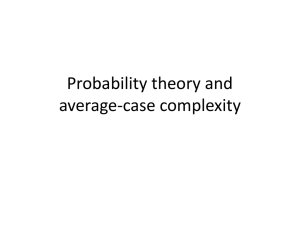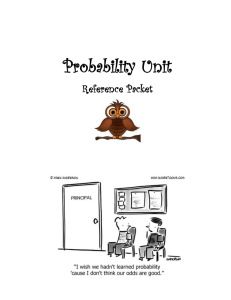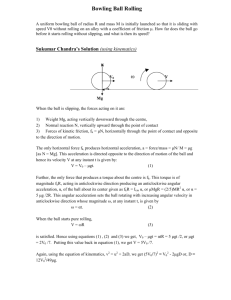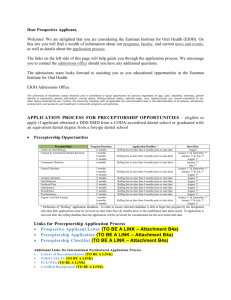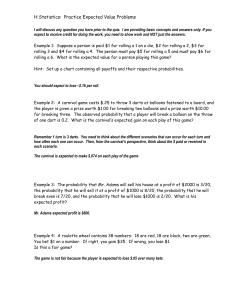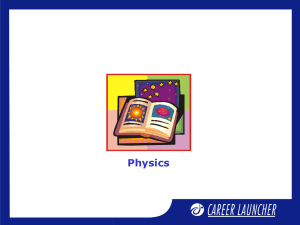Work, Energy, Rolling,
advertisement
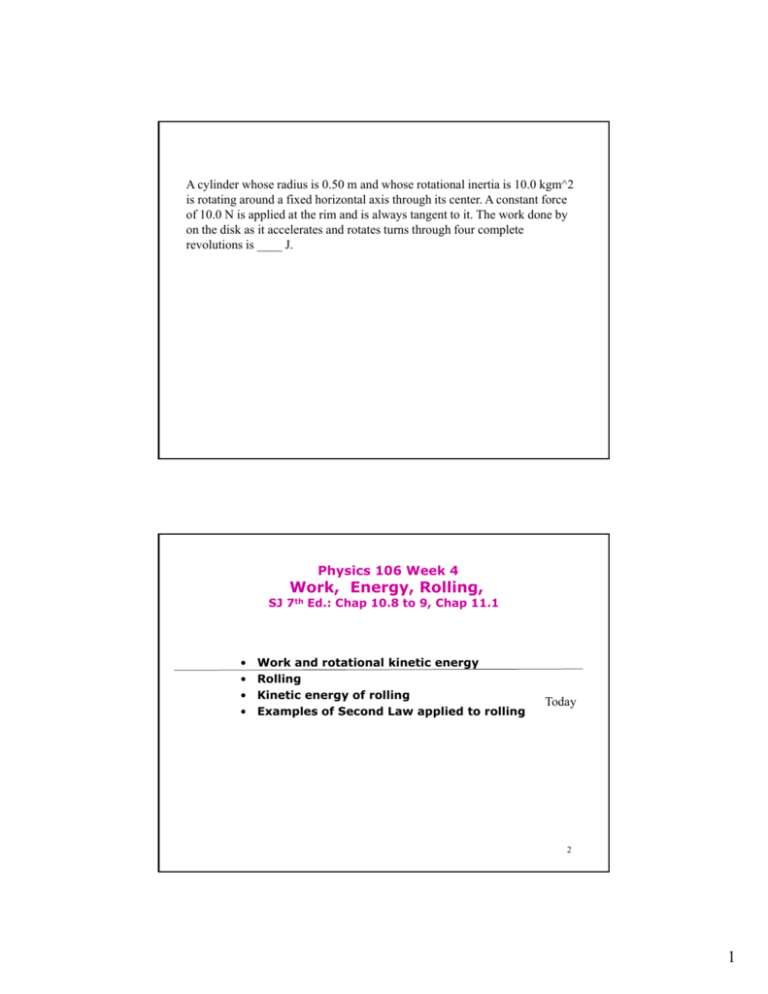
A cylinder whose radius is 0.50 m and whose rotational inertia is 10.0 kgm^2 is rotating around a fixed horizontal axis through its center. A constant force of 10.0 N is applied at the rim and is always tangent to it. The work done by on the disk as it accelerates and rotates turns through g four complete p revolutions is ____ J. Physics 106 Week 4 Work, Energy, Rolling, SJ 7th Ed.: Chap 10.8 to 9, Chap 11.1 • • • • Work and rotational kinetic energy Rolling Kinetic energy of rolling Examples of Second Law applied to rolling Today 2 1 Goal for today Understanding rolling motion For motion with translation and rotation about center of mass ω vcm Example: Rolling K total = K rot + K cm K rot = 1 I cmω 2 2 Emech = K tot + U K cm = 1 2 Mvcm 2 U gravity = Mghcm 2 A wheel rolling without slipping on a table • The green line above is the path of the mass center of a wheel. • The red curve shows the path (called a cycloid) swept out by a point on the rim of the wheel. wheel • When there is no slipping, there are simple relationships between the translational (mass center) and rotational motion. s = Rθ v cm = ωR ω vcm a cm = αR First point of view about rolling motion Rolling = pure rotation around CM + pure translation of CM a) Pure rotation b) Pure translation c) Rolling motion 3 Second point of view about rolling motion Rolling = pure rotation about contact point P • Complementary views – a snapshot in time • Contact point “P” is constantly changing v A = ωP 2R cos(ϕ) A v tan g = 2ωPR v cm = ωPR φ R ωP φ P vcm = ωP R = ωcm R v tan g = 0 ∴ ωP = ωcm ∴α p = α cm Angular velocity and acceleration are the same about contact point “P” or about CM. A bowling ball (a solid sphere with I = (2/5) MR2 ) is rolling without slipping on flat, level ground with a mass center speed vcm. Find the ratio of its translational (mass center) kinetic energy to its rotational kinetic energy around an axis through the ball’s mass center 4 iClicker Q: A solid sphere and a spherical shell of the same radius r and same mass M roll to the bottom of a ramp without slipping from the same height h. True or false? : “The two have the same speed at the bottom.” A) True B) False. Hint: Rotation accelerates if there is friction between the sphere and the ramp Friction force produces the net torque and angular acceleration. acceleration There is no mechanical energy change because the contact point is always at rest relative to the surface, so no work is done against friction I_(cm, spherical shell) = (2/3) MR^2 I_(cm, solid sphere)=(2/5) MR^2 Example: Use energy conservation to find the speed of the bowling ball as it rolls w/o slipping to the bottom of the ramp Given: h=2m Formula: For a solid sphere 2 Icm = 5 MR 2 Hint: Rotation accelerates if there is friction between the sphere and the ramp Friction force produces the net torque and angular acceleration. There is no mechanical energy change because the contact point is always at rest relative to the surface, so no work is done against friction 5 Example: A uniform circular disk of radius r and mass M is pulled by constant horizontal force F applied to the center of mass, and is rolling without slipping. M=2 kg, r=0.5 m, I_(cm,disk)=(1/2)MR^2, F=5N. a) Find the angular acceleration. b) Find minimum coefficient of static friction that makes such rolling without slipping possible. r cm CCW = + F P fs 6
